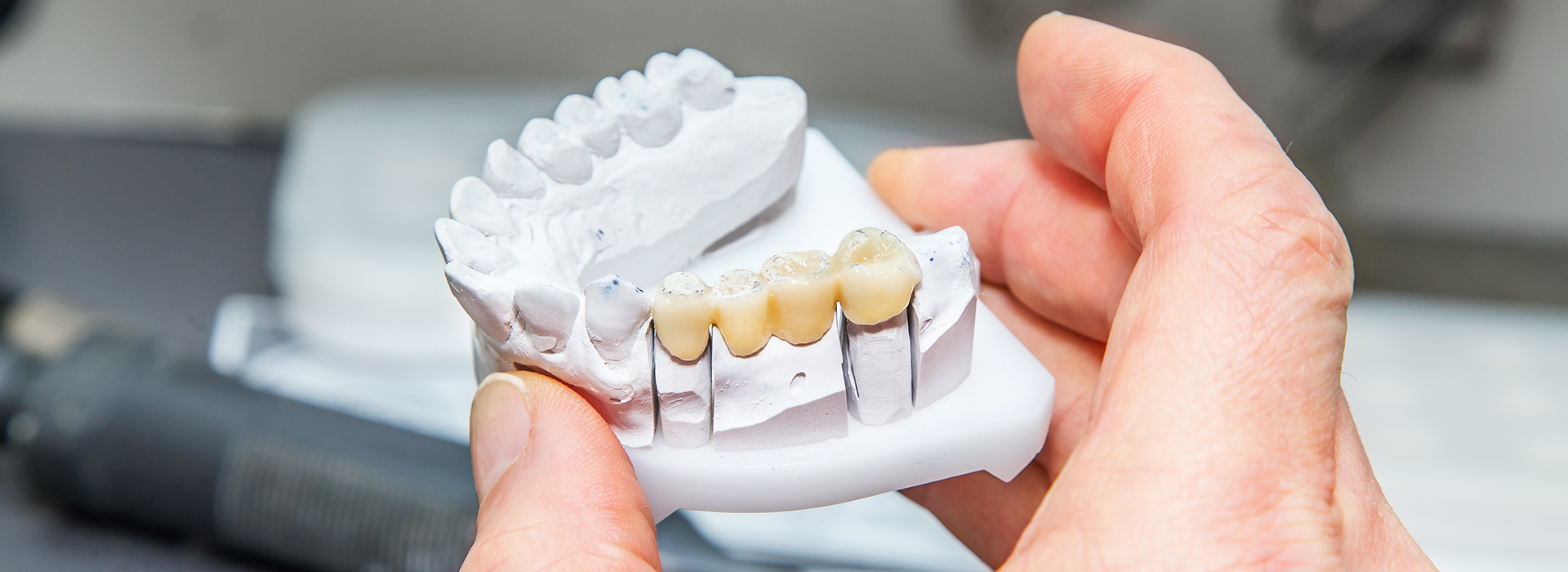At Cruzin' Dental, we help patients reclaim comfortable function and a confident smile after tooth loss. Missing teeth can affect more than appearance — they influence chewing, speech, and the long-term stability of surrounding teeth. Our goal is to explain how dental bridges work and how they fit into a thoughtful, patient-centered plan for restoring your mouth.
This page outlines common bridge types, what our team evaluates before treatment, and what patients can expect during the restorative process. The information here is factual and designed to help you make an informed decision in consultation with your dentist.
Why a single gap can change your whole bite
Even one missing tooth creates a chain reaction in the mouth. Adjacent teeth may slowly drift into the empty space, while opposing teeth can move or over-erupt because they no longer have a partner to meet. These subtle shifts change how your teeth come together and can lead to uneven wear, difficulty chewing, or jaw discomfort over time.
Beyond movement, a gap alters how chewing forces are distributed. When teeth no longer share biting loads evenly, the remaining teeth take on additional stress. That imbalance contributes to fractures, loosening, and gum problems because overloaded teeth become harder to clean and maintain.
There are also cosmetic and social impacts. Gaps can affect speech and the natural contour of your smile, which may influence your confidence. Restoring that space with an appropriate prosthetic helps maintain both oral health and day-to-day comfort.
Recognizing the progressive nature of these changes is why early assessment and timely restoration are recommended by dental professionals. A bridge can be a conservative, effective way to preserve alignment and function when a natural tooth is lost.
How bridges recreate teeth that look and work like natural ones
A dental bridge is a fixed restoration designed to replace one or more consecutive missing teeth. It typically consists of artificial teeth (pontics) anchored to supporting structures — either prepared natural teeth or dental implants. The bridge acts as a single unit, restoring the appearance of a continuous row of teeth while providing stable chewing surfaces.
Contemporary materials and laboratory techniques produce bridges that closely mimic natural tooth color, translucency, and shape. Porcelain, porcelain fused to metal, and high-strength ceramics such as zirconia are common choices because they balance durability and aesthetics. Proper shade selection and contouring allow the restoration to blend seamlessly with existing teeth.
Functionally, a well-crafted bridge restores efficient chewing and helps distribute bite forces across the dental arch. This reduces the risk of overloading nearby teeth and helps maintain the integrity of the bite. For many patients, a bridge also provides immediate psychological benefits by filling an unwanted gap and restoring a familiar oral contour.
Long-term success depends on maintenance: effective oral hygiene, routine dental visits, and the health of the supporting structures. When cared for properly, bridges can provide years of reliable service and play a valuable role in a comprehensive restorative plan.
Comparing bridge types: which approach fits your needs?
Dental bridges fall into several categories, each suited to different clinical situations. Traditional fixed bridges use crowns placed on adjacent natural teeth to support pontics. They are a time-tested solution when abutment teeth are strong and healthy enough to receive crowns.
Implant-supported bridges use dental implants as the foundation instead of natural tooth crowns. Because implants simulate tooth roots, they provide excellent stability without requiring modification of neighboring teeth. Implant-supported options are often preferred when adjacent teeth are intact and the jawbone offers adequate support.
Other designs, such as cantilever bridges and resin-bonded (Maryland) bridges, serve specific needs. Cantilever bridges anchor on one side and may be chosen when only one strong abutment is available. Resin-bonded bridges are minimally invasive and can be appropriate for certain front-tooth replacements when lower chewing forces are expected.
Choosing the right type involves balancing tooth conditions, jawbone health, esthetic goals, and long-term oral stability. During your consultation, the dental team will walk through these options and explain why a particular bridge design best addresses your functional and aesthetic priorities.
What we check before making a bridge
A reliable outcome begins with a thorough evaluation. We review the health of the gums, the condition of nearby teeth, and the quality and quantity of jawbone in the area where a replacement is planned. Healthy supporting tissues are essential for the longevity of any fixed restoration.
Diagnostic imaging — including digital x-rays and, when needed, 3D scans — helps the dentist assess bone anatomy and locate critical structures. Those images also guide decisions about whether an implant is viable or whether preparatory procedures, such as root canal therapy or periodontal treatment, are necessary first.
When natural teeth are intended to support a traditional bridge, their strength and structural integrity are evaluated. Teeth with large restorations or insufficient enamel may require alternative approaches. If implants are being considered, the team assesses bone volume and may recommend augmentation procedures to establish a secure foundation.
We also discuss the patient’s goals and daily habits. Factors like oral hygiene routine, smoking, and bruxism (tooth grinding) can influence material choice and long-term maintenance strategies, and these are addressed before any restoration is fabricated.
The step-by-step experience: from preparation to final placement
For a traditional fixed bridge, treatment generally begins with tooth preparation. The abutment teeth are shaped to receive crowns, impressions are taken, and a temporary restoration is placed to protect the prepared teeth while the final bridge is being made. Patients may notice some sensitivity during the interim period, but this typically resolves as the tissues adapt.
Implant-supported bridges involve surgical placement of implants, followed by a healing period during which the implant integrates with the bone. Depending on the case, a temporary prosthesis may be provided for esthetics and function while the site heals. Once osseointegration is complete, impressions are taken and the final bridge is fabricated and placed.
The final visit focuses on fit, occlusion, shade matching, and final adjustments. The dentist checks how the bridge meets neighboring teeth when you bite and makes refinements to ensure comfort and proper function. Patients receive care instructions that cover cleaning techniques, what to expect during the adaptation period, and when to schedule follow-up visits.
After placement, routine dental check-ups and excellent oral hygiene are key to maintaining the restoration. Regular professional cleanings and examinations allow the dental team to monitor the bridge and supporting tissues so potential issues can be addressed early.
In summary, dental bridges are a proven restorative option that can protect your oral health and restore the look and function of your smile. If you’d like to learn how a bridge might fit into your treatment plan, please contact us for more information.




